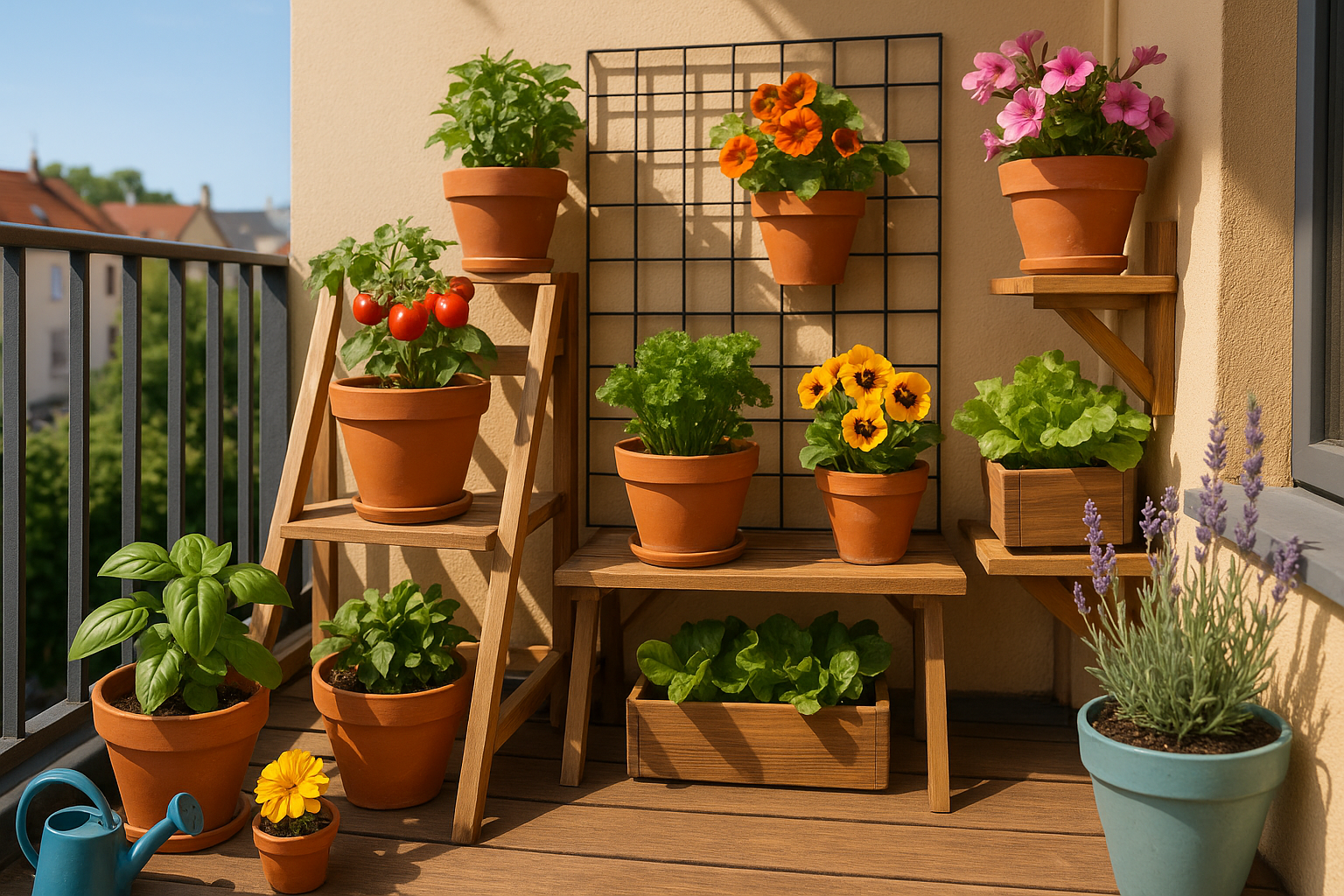Living in an apartment or having limited outdoor space doesn’t mean you have to give up on gardening. With a bit of creativity and smart planning, you can create a beautiful and productive garden even in the smallest areas. This guide will help you design a garden that fits your lifestyle, no matter how compact your space may be.
Why Garden in Small Spaces?
Urban gardening is more than a trend—it’s a solution for bringing greenery into high-density living areas. The benefits include:
- Improved air quality
- Stress reduction and mindfulness
- Access to fresh herbs and vegetables
- Aesthetic value and personalization of your home
Gardening in small spaces is about making the most of what you have.
Assessing Your Space
Start by understanding your available space:
- Balcony or patio
- Windowsills and ledges
- Wall space or fences for vertical gardening
- Indoor areas with sufficient sunlight
Take measurements and observe how much sunlight the space receives throughout the day. This helps in selecting the right plants and setup.
Choosing the Right Containers
Container gardening is ideal for small spaces. When selecting containers:
- Use pots with drainage holes to prevent root rot
- Try fabric grow bags for vegetables and root plants
- Hang baskets for trailing plants like strawberries or petunias
- Repurpose items like buckets, wooden crates, or old mugs
Make sure containers match the plant’s root depth and water needs.
Vertical Gardening Solutions
Maximize vertical space to expand your garden:
- Install wall planters or shelves
- Use a trellis for climbing plants like peas or beans
- Stack pots vertically with tiered stands
- Hang planters from ceiling hooks
Vertical gardening not only saves space but also creates visual interest.
Best Plants for Small-Space Gardens
Choose compact, productive plants that thrive in containers:
Herbs
- Basil
- Mint
- Thyme
- Chives
- Parsley
Vegetables
- Cherry tomatoes
- Peppers
- Lettuce
- Radishes
- Spinach
Flowers
- Marigolds
- Petunias
- Pansies
- Nasturtiums
Choose dwarf or mini varieties when possible for better space efficiency.
Soil and Drainage Tips
Small containers dry out faster, so soil and drainage are critical:
- Use high-quality potting mix (not garden soil)
- Add perlite or coconut coir to improve drainage and aeration
- Place pebbles at the bottom for additional drainage
- Monitor moisture daily, especially during hot months
Healthy soil is the key to strong plant growth.
Watering Techniques
Limited soil means less moisture retention, so watering is essential:
- Water deeply but less frequently
- Use a watering can with a narrow spout for precision
- Install self-watering planters if you travel often
- Consider a drip irrigation kit for balconies or patios
Water in the early morning to minimize evaporation.
Light and Positioning
Sunlight access is one of the biggest constraints in urban gardening:
- South-facing windows receive the most light
- Rotate plants weekly for even growth
- Use reflective surfaces to increase light exposure
- Add grow lights for low-light indoor spaces
Most edible plants need 6+ hours of sunlight per day.
Gardening Aesthetics and Layout Ideas
Make your small garden functional and beautiful:
- Use matching pots for a cohesive look
- Create a color palette with flowers and containers
- Mix heights to add dimension and avoid crowding
- Keep walkways clear in balconies or patios
Design your layout like a mini landscape.
Maintenance in Small Spaces
Less space means faster maintenance:
- Check for pests weekly
- Remove dead leaves or flowers to encourage growth
- Rotate crops if growing vegetables
- Fertilize monthly with compost or liquid feed
Compact spaces often make it easier to notice problems early.
Tips for Renters
If you’re renting, your garden needs to be movable:
- Avoid permanent fixtures—use lightweight containers
- Use plant caddies with wheels for flexibility
- Choose portable garden furniture
- Talk to your landlord about hanging options or railing planters
Urban gardening can be both beautiful and temporary.
Reaping the Rewards
A small garden can produce more than you expect—fresh herbs, colorful flowers, a tranquil space, and a deeper connection to nature. It’s not about how much room you have; it’s how creatively you use it.
Start small, adapt often, and soon your tiny garden will be bursting with life.

